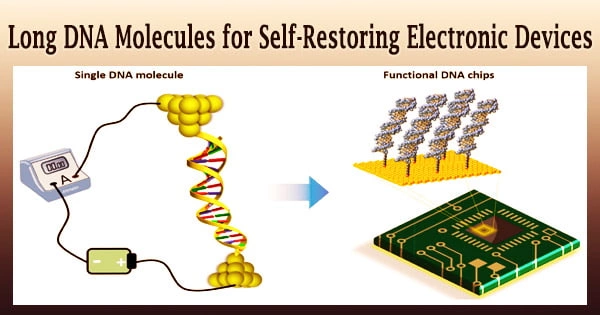The genetic code is formed by the molecule DNA (deoxyribonucleic acid, to give it its full name) in every sophisticated organism. Scientists have discovered that the intricate structures of DNA have made it possible for it to be employed in new-age electrical devices with junctions made out of just a single DNA molecule, thanks to modern technology.
However, there are roadblocks to overcome, as with any ambitious project. It turns out that single-molecule conductivity decreases significantly with molecule length, making electrical tests only possible with very short sections of DNA.
Is there a way around this problem?
There is, according to Japanese researchers in a recent ground-breaking study. They used a long DNA molecule-based junction in a “zipper” form to produce an unusually high conductivity, as well as a surprising self-restoring ability under electrical failure. These findings were published in Nature Communications as a research article.
How did the researchers achieve this feat?
Dr. Tomoaki Nishino from Tokyo Tech, Japan, who was part of this study, explains, “We investigated electron transport through the single-molecule junction of a ‘zipper’ DNA that is oriented perpendicular to the axis of a nanogap between two metals. This single-molecule junction differs from a conventional one not only in the DNA configuration but also in orientation relative to the nanogap axis.”
We investigated electron transport through the single-molecule junction of a ‘zipper’ DNA that is oriented perpendicular to the axis of a nanogap between two metals. This single-molecule junction differs from a conventional one not only in the DNA configuration but also in orientation relative to the nanogap axis.
Dr. Tomoaki Nishino
The researchers formed a zipper-like structure out of a 10-mer and a 90-mer DNA strand (which indicate the number of nucleotides, or basic building blocks of DNA, that make up the molecule length) and attached it to either a gold surface or the metal tip of a scanning tunneling microscope, which is used to image surfaces at the atomic level.
The “nanogap” formed by the spacing between the tip and the surface was changed with zipper DNA. The team assessed the conductivity of the DNA junctions by measuring a quantity called “tunneling current” across this nanogap in comparison to a bare nanogap without DNA.
They also ran molecular dynamics simulations to make sense of their findings in light of the junctions’ underlying “unzipping” dynamics. They were ecstatic to discover that the single-molecule connection with the lengthy 90-mer DNA had an unusually high conductance.
The simulations revealed that this result was due to a system of delocalized -electrons that could freely move around in the molecule. The simulations also suggested something even more intriguing: after an electrical failure, the single-molecule junction could spontaneously restore itself, going from “unzipped” to “zipped.”
This demonstrated that the single-molecule connection was both durable and repeatable. The team is ecstatic about the potential technological implications of these discoveries.
An optimistic Dr. Nishino speculates, “The strategy presented in our study could provide a basis for innovations in nanoscale electronics with superior designs of single-molecule electronics that could likely revolutionize nanobiotechnology, medicine, and related fields.”





